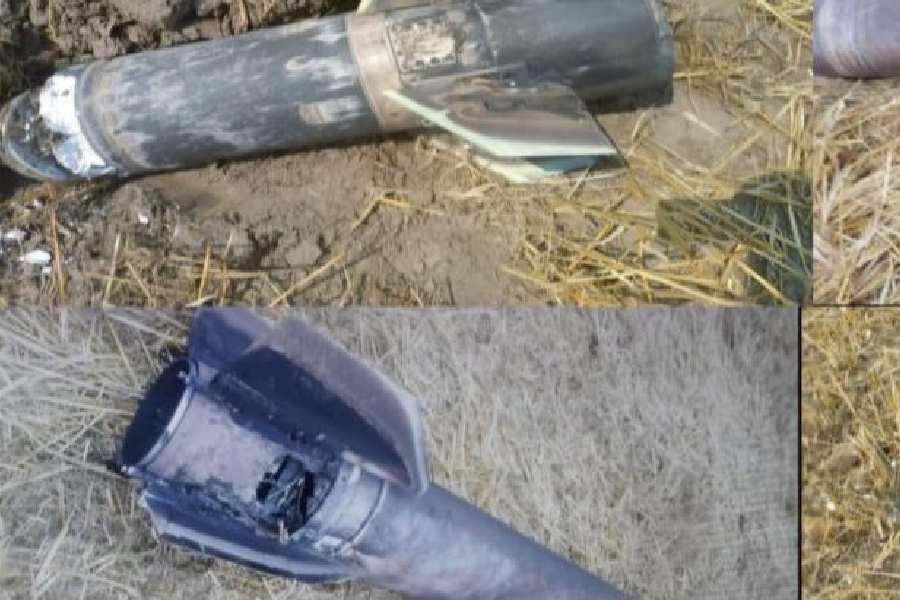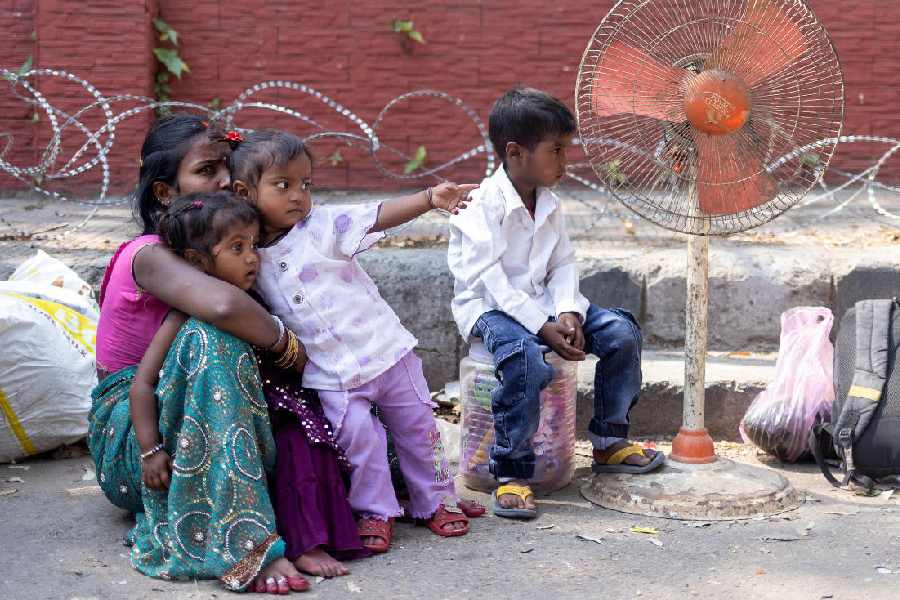 |
| Sohrai and khovar paintings on the boundary wall of CRPF headquarters in Hazaribagh. (Vishvendu Jaipuriar) |
Hazaribagh, Nov. 21: Sohrai and khovar, two dying tribal art forms of the state, have found a new canvas — boundary walls of government buildings in Hazaribagh.
Indigenous people have been using these ancient art forms to decorate their houses for centuries. Now, CRPF, in a unique step, has roped in local sohrai and khovar artists to spruce up the outer walls of its district headquarters on NH-33.
For the last 10 days, Rukmani Devi, known internationally for her sohrai work, has been leading a team of four to complete the assignment. Her two daughters-in-law, Sushma Devi and Anjali Devi, and son Ashok Prajapati are helping her in this endeavour.
CRPF commandant of the 22 battalion Munna Kumar Singh said he had read a lot about these two ancient art forms. “They are on the verge of extinction. So I decided to do something to save them.”
Sohrai and khovar artists use natural resources like red, black, yellow and white soil, cow dung, coal and powdered leaves, to make colours. So, the paintings do not cost much.
They bring the soil from Barkagaon, around 65km from Hazaribagh, where the tradition is still alive, thanks to a few villagers.
Rukmani said traditionally, instead of brushes, artists used brooms and combs to draw and colour walls. “But, nowadays, they use brushes for better finishing.”
According to tribal tradition, “khovar” is from two words, “kho” (meaning cave) and “var” (signifying husband). This art form is associated with marriages. Sohrai, on the other hand, is practised during harvesting season.
While animals and birds (generally longer in shape) are predominant subjects in khovar, sohrai’s main theme is nature, greenery and trees.
Singh is planning to provide these artists a bigger canvas for better exposure. “I have talked to officials, who are living in residential quarters in Hazaribagh. Once the artists complete the office building, we will allow them to decorate walls of their Lake Road official residences,” he said.
Initially, the senior CRPF officer had approached the district administration and police to help revive these paintings. But he soon realised that a personal initiative would be the best way to begin.
“We should all make efforts to keep our culture alive,” he added.









